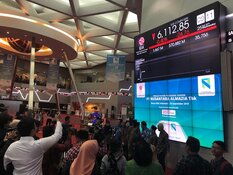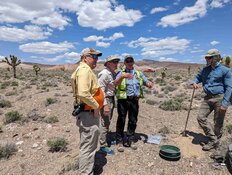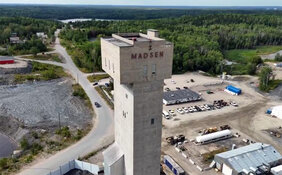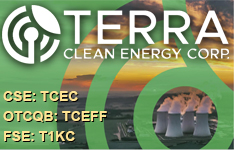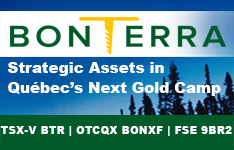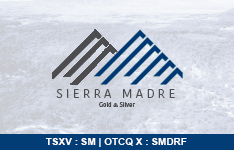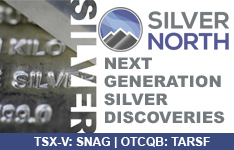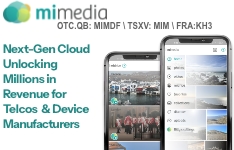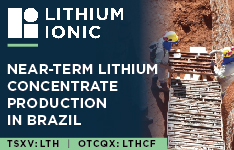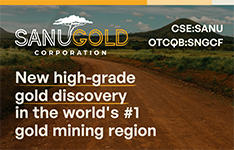Pacific Empire Minerals Corp. (PEMC:TSX.V; PEMSF:OTCMKTS) has provided an update on its exploration targets at the Trident and Pinnacle projects in British Columbia. These projects, located approximately 50 kilometers west of Centerra Gold’s Mt. Milligan Mine and 30 kilometers southeast of Northwest Copper Corp.’s Kwanika deposit, are the primary focus of the company’s ongoing copper-gold exploration efforts.
The Trident project remains the company’s top priority, with exploration centered on a gold-enriched copper porphyry system. Soil sampling has revealed copper values as high as 5,213 parts per million (ppm) across a two-kilometer-by-four-kilometer zone, while gold values have reached up to 591 parts per billion (ppb). The geochemical anomalies align with geophysical indicators, including resistivity highs and chargeability anomalies detected via airborne and ground-based surveys. Historical drilling south of the porphyry target intersected mineralized hornblende-feldspar monzonite porphyry dikes, prompting plans for future drilling to test the primary porphyry zone from the opposite direction.
Two breccia targets adjacent to the porphyry system have also been identified. The Eastern Breccia Target is supported by a strong conductivity anomaly and high-grade float rock samples, which returned values of up to 3.3% copper, 3.6 grams per tonne (g/t) gold, and 56.6 g/t silver. Additionally, a barite vein sample in the area yielded 6.0% copper, 6.0% zinc, 1.5 g/t gold, and 5.0 g/t silver. The Western Breccia Target exhibits a strong correlation with copper and gold-in-soil anomalies and conductivity highs.
As per the recent news release, Pinnacle is focused on two main target areas: Aplite Creek North and South Pinnacle. Aplite Creek North features copper-bearing outcrops associated with aplite dikes and quartz veining, alongside a historical drill intercept of six meters grading 6.4 g/t gold. The area is supported by geophysical data, including induced polarization (IP) chargeability anomalies and soil geochemistry results. South Pinnacle exhibits a copper-in-soil anomaly and coincident geophysical responses from past surveys.
Both Trident and Pinnacle are positioned within a structural corridor influenced by sinistral transpression, a geological process associated with fault movement and mineralization. This structural setting, observed in the Mt. Milligan Mine and New Afton deposit, is considered significant for gold-enriched copper porphyry formation. The Klawli River, which separates the two properties, has also demonstrated gold potential, with placer gold discoveries suggesting a nearby hard-rock source.
Pacific Empire is preparing for a systematic drill program at Trident and additional prospecting at Pinnacle. The company will present its plans at the Prospectors and Developers Conference (PDAC) in Toronto from March 2 to March 5, 2025, where it intends to engage with investors and potential partners.
Copper Demand Surges While Gold Hits Record Highs Amid Global Shifts
In a YouTube video, Jeff Christian of the CPM Group reported on February 7 that gold surpassed US$2,900 per ounce, supported by political and economic uncertainties. The firm observed strong investment demand in January and highlighted increased physical gold flows into the United States due to speculative buying and fabrication demand. The report also noted that silver had climbed to US$33 per ounce, benefiting from strong open interest in futures contracts.
Ahead of the Herd reported on February 8 that global copper demand was expected to increase by 70% by 2050, reaching 50 million tonnes annually. BHP’s chief commercial officer Rag Udd stated that the energy transition sector alone could represent 23% of copper demand by mid-century, compared to just 7% today. The digital sector, including data centers, 5G, and AI, was projected to grow from 1% to 6% of copper demand over the same period. On the supply side, copper mine grades have declined by 40% since 1991, and between one-third and one-half of global copper supply is expected to face grade depletion and aging challenges in the next decade. BloombergNEF estimated that US$2.1 trillion in investment would be required by 2050 to meet raw material demands, as supply deficits for copper and other key metals continue to emerge.
On February 10, Technical Analyst Clive Maund stated that gold’s powerful uptrend, which began less than a year ago, had further potential, while silver’s corresponding uptrend was still in its early stages. The analysis indicated that silver was approaching a breakout point, potentially reaching its 2011 high of US$50 per ounce. The report also emphasized the role of inflationary pressures and economic policy shifts in shaping precious metal trends.
Ahead of the Herd wrote on February 17 that central bank gold buying had been a major driver of gold’s price increase. The Federal Reserve’s first interest rate cut since the pandemic on September 18, 2024, had contributed to a looser monetary policy environment. Gold prices rose 32% year-to-date, while silver gained 11%, according to CNBC.
According to Oilprice.com via Yahoo Finance on February 23, gold reached an all-time high of US$2,942.70 per ounce due to policy uncertainty, central bank purchases, and geopolitical tensions. UBS analyst Joni Teves noted that gold could peak at US$3,200 per ounce before stabilizing, while Goldman Sachs increased its year-end projection to US$3,100 per ounce.
Advancing Exploration: Targeted Drilling and New Opportunities at Trident and Pinnacle
Pacific Empire’s near-term exploration focus is on advancing Trident’s porphyry and breccia targets through targeted drilling. The company’s investor materials highlight the significance of geochemical and geophysical indicators supporting these targets, along with the structural setting’s similarities to known porphyry deposits in the region.
At Pinnacle, increased accessibility due to recent logging operations and forest fires has created new opportunities for mapping and sampling. The company aims to assess newly exposed rock formations along freshly built roads, expanding its understanding of the property’s mineralization potential. Historical drilling at Pinnacle has already returned high-grade gold results, reinforcing its prospectivity.
With a fully permitted drill program at Pinnacle and an advanced exploration strategy at Trident, Pacific Empire is positioned to capitalize on the region’s mineral potential. The company continues to seek partnerships and funding opportunities to support its exploration activities, emphasizing its location within a well-established porphyry belt hosting multiple producing mines and advanced-stage projects.
Ownership and Share Structure
 Streetwise Ownership Overview*
Streetwise Ownership Overview*
Pacific Empire Minerals Corp. (PEMC:TSX.V;PEMSF:OTCMKTS)
According to Refinitv, 3.38% of Pacific Empire Minerals Corp is held by management and insiders with Bradley Peters atop at 2.46%. .07% is held by corporations. The rest is retail.
Pacific Emptire Minerals has 139.8 million outstanding shares, 134.97 million free float shares, and a market capitalization of CA$3.9 million. The 52 week range is CA$0.02 - 0.08.
| Want to be the first to know about interesting Gold, Silver and Critical Metals investment ideas? Sign up to receive the FREE Streetwise Reports' newsletter. | Subscribe |
Important Disclosures:
1) James Guttman wrote this article for Streetwise Reports LLC and provides services to Streetwise Reports as an employee.
2) This article does not constitute investment advice and is not a solicitation for any investment. Streetwise Reports does not render general or specific investment advice and the information on Streetwise Reports should not be considered a recommendation to buy or sell any security. Each reader is encouraged to consult with his or her personal financial adviser and perform their own comprehensive investment research. By opening this page, each reader accepts and agrees to Streetwise Reports' terms of use and full legal disclaimer. Streetwise Reports does not endorse or recommend the business, products, services or securities of any company.
For additional disclosures, please click here.


